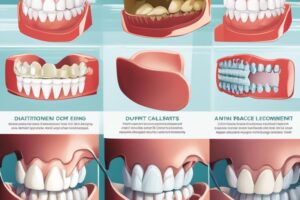Extraction of teeth can be a necessary and sometimes daunting procedure for individuals dealing with severe dental issues. Whether it’s due to decay, damage, overcrowding, or alignment problems, understanding the process of tooth extraction can help alleviate anxiety and ensure a smooth experience. From the initial consultation with your dentist to the aftercare following the extraction, knowing what to expect every step of the way is crucial. This informative guide will walk you through the tooth extraction process, covering everything from pre-extraction preparations to post-surgery care, empowering you to make informed decisions about your dental health.
Key Takeaways:
- Consult a professional: Seek guidance from a dental professional to determine if tooth extraction is necessary and to discuss the process involved.
- Prepare for aftercare: Be prepared for post-extraction care, including managing pain, swelling, and following guidelines for proper healing.
- Consider replacement options: Discuss potential tooth replacement options with your dentist to maintain proper function and aesthetics after tooth extraction.
Understanding the Need for Tooth Extraction
The Do Wisdom Teeth Have To Be Removed? question is one that many individuals face when dealing with problematic teeth. Before delving into the extraction process, it’s necessary to understand the reasons why tooth extraction may be necessary.
Causes of Problematic Teeth
Causes of problematic teeth can vary, but common reasons for extraction include severe decay, advanced gum disease, overcrowding, and damage from trauma. In some cases, wisdom teeth may also need to be removed due to impaction, causing pain and potential infection.
Symptoms Indicating Extraction is Necessary
An extraction may become necessary when symptoms such as severe pain, swelling, redness, or tenderness in the affected area are present. Bleeding gums, pus, bad breath, and a persistent bad taste can also indicate the need for extraction. It’s crucial to pay attention to these signs and consult with a dental professional promptly.
Indicating timely extraction can help prevent further complications and alleviate discomfort. Ignoring symptoms and delaying treatment can lead to more severe oral health issues, including the spread of infection, bone loss, and shifting of teeth. Seeking professional advice and scheduling an evaluation can determine the best course of action to maintain oral health.
Preparing for Tooth Extraction
Consultation with a Dental Professional
Some teeth pose issues that cannot be resolved and may require extraction. It is crucial to consult with a dental professional to discuss the need for extraction, the procedure itself, and any concerns or questions you may have. They will evaluate your dental health and consider various factors before recommending extraction.
Pre-Extraction Measures and Considerations
Tooth extraction is a routine dental procedure that may be necessary due to various reasons such as severe decay, impacted teeth, or overcrowding. Preparing for extraction involves understanding the process, following pre-operative instructions provided by your dentist, and discussing any underlying medical conditions or medications that could affect the procedure.
Professional dental evaluation and X-rays will be conducted to assess the tooth and surrounding structures before extraction. Your dentist will discuss the type of extraction needed (simple or surgical), potential risks involved, and post-operative care instructions to ensure a smooth recovery process. It is crucial to follow all recommendations provided by your dental professional to minimize complications and promote healing.
The Tooth Extraction Procedure
Types of Extractions
Types of extractions refer to the various procedures used to remove teeth that are causing problems. There are two main types: simple extractions and surgical extractions. Simple extractions are performed on teeth that are visible in the mouth, while surgical extractions are more complex and involve teeth that may be impacted or have not fully erupted.
| Simple Extractions | Surgical Extractions |
| Performed on visible teeth | Performed on impacted or unerupted teeth |
| Usually done with local anesthesia | May require general anesthesia |
| Quick procedure | More complex and may take longer |
| Minimal discomfort | Higher risk of complications |
Any extraction should be performed by a qualified dentist or oral surgeon to ensure the best outcome for the patient.
What to Expect During Extraction
To prepare for a tooth extraction, the dentist will first numb the area around the tooth to ensure the patient does not feel any pain during the procedure. Then, specialized tools are used to gently loosen the tooth from its socket before it is carefully removed. Patients may feel pressure but should not experience pain.
Extraction can sometimes lead to minor bleeding, which is normal and should stop on its own. The area may be stitched up if necessary, and patients will be given aftercare instructions to ensure proper healing. It’s important to follow these instructions carefully to prevent any complications.
Aftercare and Recovery
Immediate Post-Extraction Care
One of the most crucial aspects of immediate post-extraction care is to bite down on a clean piece of gauze to help stop the bleeding. It’s normal to experience some bleeding and oozing for a few hours after the procedure. Avoid spitting or rinsing vigorously to prevent dislodging the blood clot in the socket, which is necessary for healing.
Long-Term Dental Health Post Extraction
Health
With the right care, your extraction site will heal well, and you’ll be on the path to long-term dental health. Avoid smoking or using tobacco products, as they can delay healing and increase the risk of complications. Stick to a soft diet, brush gently around the extraction site, and follow any additional instructions provided by your dentist for a smooth recovery process. Regular dental check-ups are vital to monitor healing and prevent any potential issues from arising.
Alternatives and Preventative Measures
Non-Extraction Treatments for Problematic Teeth
Keep in mind that not all dental issues require extraction. In cases where a tooth is damaged or infected, root canal therapy may be a viable alternative to extraction. This procedure involves removing the infected pulp, cleaning the inside of the tooth, and sealing it to prevent further infection. Additionally, crowns or fillings can help restore the function and appearance of a damaged tooth, eliminating the need for extraction in some cases.
Preventing the Need for Future Extractions
Any proactive approach to oral health is important in preventing the need for future extractions. Regular dental check-ups and cleanings can help catch dental problems early on, allowing for less invasive treatments. Good oral hygiene practices at home, such as brushing twice a day and flossing regularly, can also go a long way in preventing tooth decay and gum disease that may lead to extractions.
Treatments such as dental sealants and fluoride treatments can further protect teeth from decay, reducing the likelihood of future extractions. Educating yourself on proper oral care habits and lifestyle choices can greatly impact the health of your teeth and gums, ultimately reducing the need for extraction procedures.
Summing up
Conclusively, the journey of facing tooth extraction can be filled with uncertainties and concerns. By understanding the reasons behind the procedure, preparing adequately with the help of a professional, and taking care of oneself post-extraction, the experience can be more manageable. As each individual situation is unique, it is important to consult with a dentist to determine the best course of action for saying farewell to problematic teeth. Keeping a positive outlook and following post-care instructions will ensure a smooth recovery process. Embracing this necessary step in oral health care with knowledge and confidence can lead to better overall dental wellness in the long run.
FAQ
Q: Why might someone need a tooth extraction?
A: There are several reasons why a tooth extraction might be necessary. Common reasons include severe tooth decay, advanced gum disease, tooth overcrowding, or a tooth that is fractured beyond repair.
Q: What can I expect during a tooth extraction procedure?
A: During a tooth extraction, your dentist will first numb the area with a local anesthetic to minimize any pain or discomfort. The tooth will then be gently loosened and removed. In some cases, stitches may be required to close the extraction site.
Q: How should I care for my mouth after a tooth extraction?
A: After a tooth extraction, it’s important to follow your dentist’s instructions for care. This typically involves gently biting on a piece of gauze to help stop any bleeding, avoiding vigorous rinsing or spitting for the first 24 hours, and taking any prescribed medications as directed. It’s also important to stick to soft foods and avoid smoking or using a straw to prevent complications.







